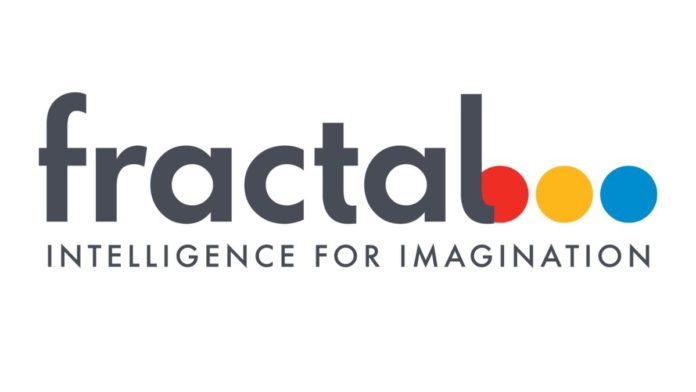Python is undoubtedly the most popular and user-friendly programming language for implementing data science and machine learning-related tasks. Since Python has a vast collection of advanced packages or libraries, users or developers can use it for seamless implementation of any high-end AI-based tasks. Python has more than 137,000 libraries where each library focuses on implementing a particular function or purpose to your program. When it comes to high-end processes like machine learning and deep learning, there are extensive collections of Python data science libraries that help you in various phases of the ML model development life cycle, including data loading, data visualization, and model building.
This article focuses on the top 10 Python library lists that are used in different phases of the model development lifecycle.
- TensorFlow
Developed by Google in 2015, TensorFlow is an open-source and most popular Python data science library for deep learning and artificial intelligence applications. With TensorFlow, you can quickly solve any complex numerical computations and implement large-scale machine learning models, including handwritten digit classification, image recognition, text classification, and recommendation systems. TensorFlow provides a comprehensive ecosystem of tools and APIs for developers, enterprises, and researchers. Such tools help developers to build and deploy scalable machine learning and deep learning applications.
Designed to be a highly compatible library, TensorFlow can run on various devices and platforms, incorporating the advantage of each. TensorFlow is being used by data science and machine learning teams of the world’s top companies to serve and understand customers better. For example, Airbnb uses TensorFlow to build a user-interaction model that automatically guides guests through the payment, cancellation, or refund process. With this, Airbnb provides an instant and smart response to their customers, thereby enhancing the booking experience.
TensorFlow offers standard documentation that guides you through the features, functionalities, and methodologies for implementing machine learning use cases.
- Keras
Keras is an open-source and easy-to-use Python data science library for machine learning and deep learning operations. It is also termed as one of the high-level APIs of TensorFlow for implementing neural network strategies on deep learning models. Keras perfectly runs on high-level CPU and GPUs, enabling fast experimentation of neural networks models.
Incorporating multiple neural network models like CNN and RNN in its backend, Keras helps you build high-end and complex deep learning models in less time.
Since Keras is beginner-friendly and fast during model deployments, users can develop high-end deep learning models with minimum codes in less time. As of 2021, Keras is being used by over one million individual users worldwide. Some of the world’s most popular companies like Netflix, Uber, and Instacart use Keras for analyzing customer engagement for delivering a better user experience. For example, Netflix uses Keras to build recommendation systems based on past user preferences.
Keras also offers strong community support to its users by providing standard and easy-to-understand documentation, allowing any user to quickly learn and implement Keras on their own.
- OpenCV
Originally developed by Intel, OpenCV is the most popular Python artificial intelligence library for building real-time computer vision, machine learning, and image processing applications. OpenCV was originally written in C++ that comprises over 2500 optimized algorithms. Being one of the widely used libraries, OpenCV allows you to implement computer vision applications like video processing, image recognition, object detection, motion tracking, and much more. It is a cross-platform package that supports various programming languages, including Python, Java, and C++.
Since OpenCV is an open-source and cross-platform library, it can be used across many operating systems, including Windows, macOS, and Linux. OpenCV can run even on Android and iOS, enabling users to build computer vision-based mobile applications. Because of its high-end features and functionalities, most prominent companies like Google, Microsoft, Honda, and Toyota use OpenCV to build models for real-time computer vision applications.
OpenCV is perfectly documented, incorporating respective codes for various methods and functions which is easy to understand, and beginner-friendly.
- PyTorch
Developed and released by Facebook’s AI research group in 2016, PyTorch is one of the most popular open-source Python data science libraries. PyTorch mainly focuses on deep learning applications, including image classification, handwriting recognition, and time series forecasting. Being highly compatible with the Python programming style, PyTorch is one of the go-to Python data science libraries for implementing complex neural network use cases. Developers use PyTorch for designing complex and high-end deep learning models because of its fast and flexible experimentation feature.
PyTorch has a distributed training feature that allows developers to distribute the computational tasks among multiple CPUs or GPUs, enabling parallel processing to boost productivity. PyTorch also has a large community of researchers and ML developers who regularly build new tools and libraries to extend the functionality of PyTorch. In addition, some of the most popular companies like Microsoft, Disney, and OpenAI use PyTorch for scaling and optimizing their AI systems.
PyTorch offers clear and perfect documentation for users to easily understand its features and functionalities along with its use cases.
- Sci-Kit Learn
SciKit-Learn, also called sklearn, is one of the most popular Python data science libraries that comprises a variety of supervised and unsupervised algorithms for building machine learning models. With the SciKit-Learn library, you can access various algorithms for machine learning use cases, including regression, classification, and clustering.
SciKit-Learn has a rich set of functions and modules that allow you to seamlessly perform all machine learning-related tasks, from loading the dataset to model building to evaluating the metrics. With this Python library, users can perform machine learning operations with minimum code adjustments instead of writing a complex algorithm from scratch.
SciKit-Learn is perfectly documented and has a vast research community where individuals can contribute their newly developed algorithms.
- Seaborn
Seaborn is one of the most popular Python libraries for data visualization and exploratory data analysis. With Seaborn, you can create high-level and attractive statistical plots in different styles and colors. In other words, using Seaborn, based on your data, you can create aesthetic and informative plots, including scatterplot, lineplot, and displot. Many other Python data science libraries are used for data visualization and exploration, but Seaborn is widely used among data analysts and data scientists because of its unique features.
Seaborn eases the process of data visualization where you just need to pass your dataset into the seaborn function to instantly get insights into your dataset. With its high-level interfaces and customizable themes, Seaborn allows you to easily customize the plots and charts according to your likings and use cases.
Seaborn is so perfectly documented that even beginners can quickly learn and start implementing data visualizations in Python.
- Pandas
Pandas is one of the most straightforward yet powerful Python data science libraries for performing data analysis. It is also one of the most popular open-source libraries for implementing data manipulation and wrangling operations. Pandas provides an easy syntax for performing all data-related analytics operations, making it easier to manipulate and understand data. In other words, you can not only manipulate data but also load, clean, prepare, merge, join, reshape data, and much more.
With Pandas, you can perform data-related operations for data that are represented in the 2D tabular format i.e., rows and columns. Such two dimensional tables consisting of rows and columns are called a dataframe. Since the dataset is represented in a dataframe format, it is easier to fetch and manipulate the data according to your use cases. With Pandas, you can read data from any file format like text, CSV, JSON, and xlsx to easily convert it into dataframe format for further data analysis operations.
Pandas is perfectly documented that covers all its features and functionalities, making it easier for beginners to quickly learn and start implementing data operations.
- Numpy
Numpy stands for Numerical Python, which allows you to perform logical and mathematical operations on arrays. In other words, Numpy is an open-source Python library that consists of multi-dimensional array objects and a set of routines like mathematical, logical, statistical operations for performing fast operations on arrays.
Since Numpy comprises pre-defined and high-level mathematical functions, you can quickly solve complex math problems without writing a single line of code. Additionally, when combined with Scipy, a scientific library, and Matplotlib, a visualization library, Numpy can effectively replace MatLab, a technical computing software.
Numpy has excellent documentation that incorporates all its functions and methodologies, making it easy for beginners to understand and implement complex math operations.
- NLTK
NLTK stands for Natural Language ToolKit, which is an open-source Python library that allows performing Natural Language Processing (NLP) operations on human language data. In other words, NLTK is a suite that contains libraries and programs for performing language processing operations on text data, including tokenization, stemming, and lemmatization.
With NLTK, you can also perform visualizations and graphical demonstrations on text data, making it easier to understand and analyze the patterns behind texts and sentences. Furthermore, NLTK is a community-driven project that helps all AI enthusiasts, including linguistics engineers, ML engineers, and researchers.
NLTK offers you standard documentation that incorporates all the functions and methods for implementing all NLP-related operations.
- Beautiful Soup
Beautiful Soup is one of the open-source Python data science libraries for performing web scraping operations using Python. In other words, this library is used to pull required data out of HTML and XML files. Web scraping is a phenomenon of collecting data from the internet by using different frameworks and tools.
With Beautiful Soup, you can seamlessly extract all data or filter only specific elements of interest from the respective website. After collecting data from a website, you can store those in specific formats like CSV or text according to your likings. Such files can then be loaded and converted into data frames using Python to perform any data-related operations.
Beautiful Soup is perfectly documented, incorporating all the web scraping syntaxes, methodologies, and functions.











